Active region rotating onto the southeastern limb crackling with solar flares
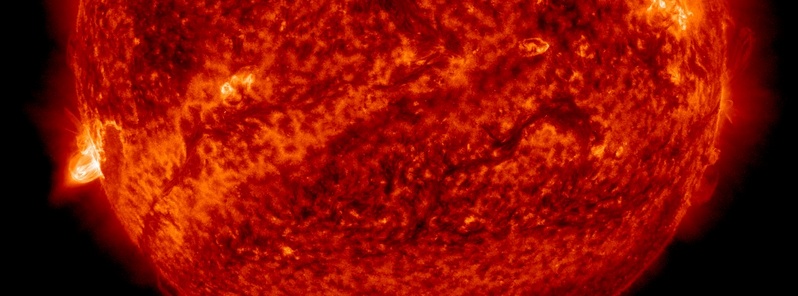
Unnumbered region just rotating onto the southeastern limb produced 3 M-class (R1-Minor radio blackout) and several C-class solar flares in last 24 hours.
The largest was a M3.0 that peaked at 04:57 UTC today, with the two M1 flares reaching their peaks at 18:11 UTC (M1.2) on March 5 and at 08:15 (M1.5) on March 6.
All three M-class flares produced Coronal Mass Ejections (CMEs).
The first was observed in LASCO COR2 imagery at 20:12 UTC on March 5, it appeared to be very narrow, and was well off the Sun-Earth plane.
The second occurred at 04:38 UTC today, with the third occurring at 07:12 UTC.
Neither of these subsequent CMEs appear to have any Earth-directed components either, but a more thorough analysis will be conducted as more imagery is received, SWPC said in their Forecast Discussion issued 12:30 UTC today.
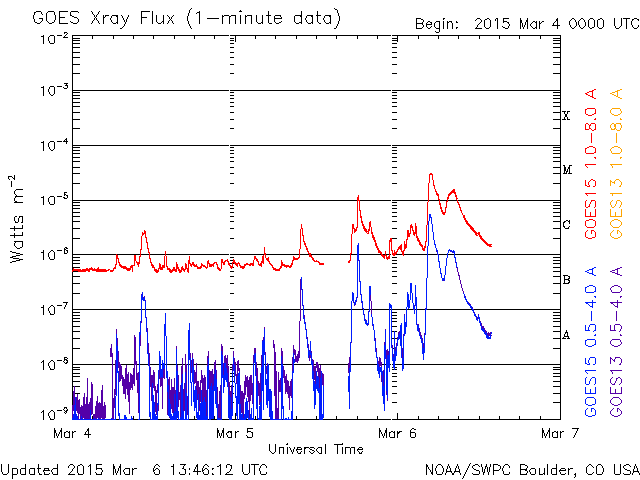
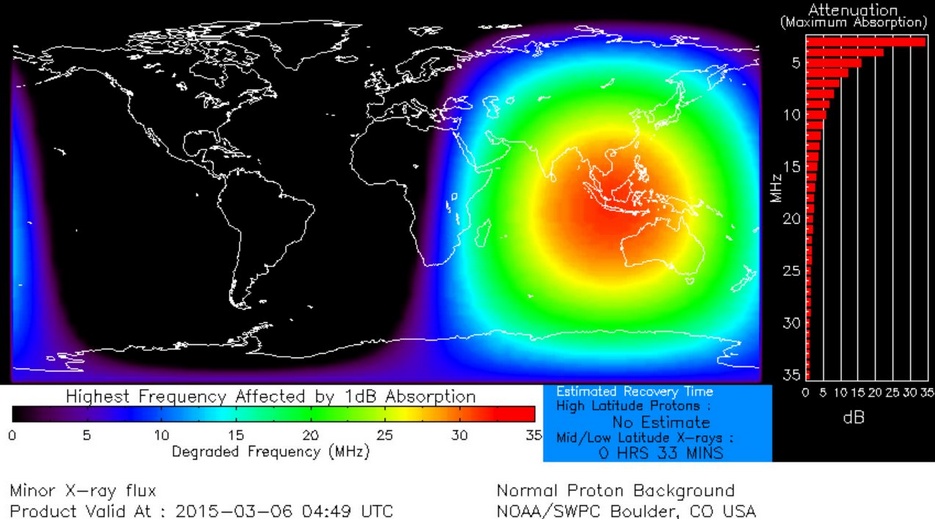
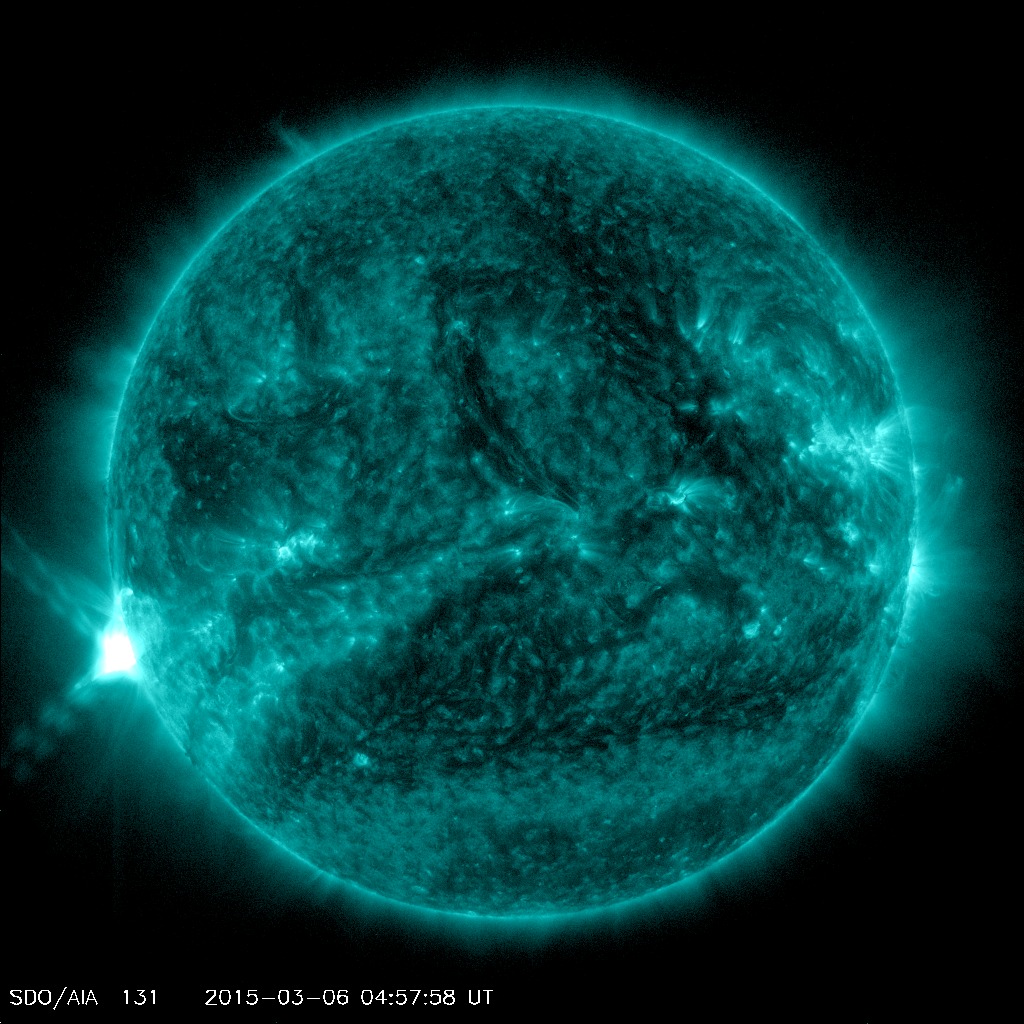
Sunspots
There are currently two numbered sunspot regions on the Earth side of the Sun.
Region 2293 (N05W60, Cao/beta) continues to decay as it makes its way around the west limb. Region 2295 (S08W60) decayed to plage during last 24 hours.
Old Region 2288 is due to return from March 6 to 8.
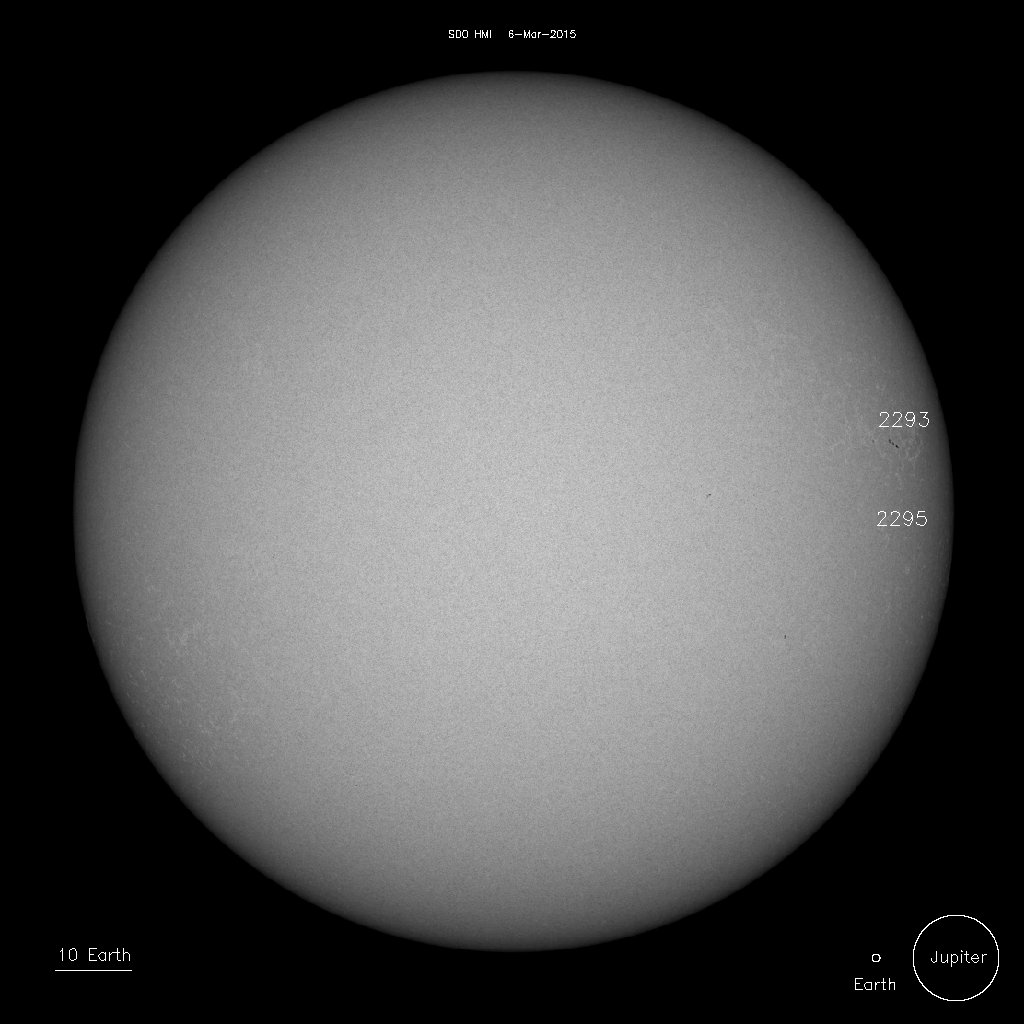
Sunspots on March 6, 2015. Image credit: NASA SDO/HMI.
2293 – Beta
2295 – Beta
Forecast
Solar activity is expected to be low with a slight chance for M-class (R1-R2/Minor-Moderate) flare activity on March 6 increasing to a chance for M-class (R1-R2/Minor-Moderate) flare activity on March 7 and 8. However, probabilities will likely increase as the unnumbered region currently rotating onto the east limb becomes more visible and a better analysis of its size and magnetic complexity can be performed.
The greater than 2 MeV electron flux is expected to be at normal to high levels over the next three days (March 6 – 8), while the greater than 10 MeV proton flux is expected to remain at background levels.
Solar wind parameters are expected to remain near background levels on March 6 and 7 under a nominal solar wind regime. By March 8, a positive polarity coronal hole high speed stream (CH HSS) is expected to move into geoeffective position, causing minor disturbances to the solar wind environment.
Geomagnetic field activity is expected to be at quiet to unsettled levels for the remainder of the UTC day as well as tomorrow, under a nominal solar wind regime. The geomagnetic field is expected to be at quiet to active levels with a slight chance for G1 (Minor)
geomagnetic storm conditions on March 8 as a positive polarity CH HSS become geoeffective.
Featured image: NASA SDO/AIA 304 at 08:15 UTC on March 6, 2015.

Commenting rules and guidelines
We value the thoughts and opinions of our readers and welcome healthy discussions on our website. In order to maintain a respectful and positive community, we ask that all commenters follow these rules.